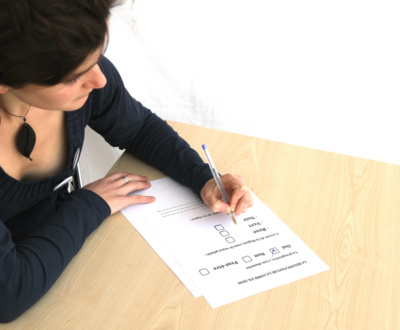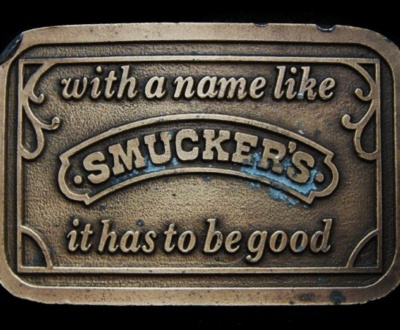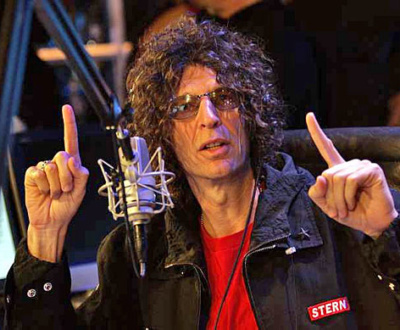I just finished reading a great post from Noah Kagan on OkDork that analyzed why content goes viral – the article provides 10 tips to help increase the chances of a post being shared. It has a lot of fantastic material that I wholeheartedly agree with. However no matter how many of these “ingredients” you use in your post, you won’t be able to go viral unless you hook people in and the best way to do that is by making sure you come up with a catchy, curiosity-inducing headline.
A great headline can be the difference between 1,000 views and 100,000 views. It can also be the difference that gets visitors to read your blog post at all, since on average eight out of 10 people will only skim the headline before moving on.
So how do you decrease that percentage and increase the number of people who read the full post? It’s all in the headline, and even the best article in the world won’t have any traction without a great headline at the top to hook visitors and get them reading more (and then hopefully by incorporating some of the points in the article on OkDork, you’ll be able to get your article to go viral).
Here are a few keys to writing a great headline that engages readers and boosts clicks:
Come Up with More Than One
Viral content website Upworthy comes up with 25 headlines for each post before it is published. Upworthy does this because each of those headlines is tested, and the title that performs the best is the one that’s kept. Now, you don’t have to write 25 headlines, but you don’t have to keep the first one you come up with either. You only need to think of a few, and then follow this simple formula for refining and choosing the final title.
This is also a worthwhile practice if you plan to repurpose your content, like in an email newsletter or in a future tweet. With a new headline, it’s not so obvious that you’re sharing a blog post you wrote previously, and it increases the odds you will be able to engage those in your audience who may have missed it the first time, or who weren’t intrigued by the previous title. Upworthy actually did this with an already-viral video, hoping to make it go viral again. “Zach Wahls speaks about family,” worked the first time, but not as well as “Two Lesbians Raised a Baby And This Is What They Got.” The second headline, a new headline, meant another 20 million views.
Specificity is Your Friend
Hopefully you already understand the importance of specificity in a headline, but there are so many ways to be specific it can be hard to summarize. It’s usually more helpful to see headlines that aren’t specific — so you know how not to do it. Here are three real headlines from published blogs that fail the specificity test:
- Come in First in the First State of Delaware
- Relax! A National Answering Service Has You Covered…
- How We Do the Small Things
Specificity is crucial because a specific headline answers questions readers have about the article before they invest time reading it. Readers need to feel confident that they will be interested by what they read before they decide to start reading a post. These example headlines create more questions than answers i.e. what am I coming first in? What is this national answering service covering? What are these small things and why do they matter if they’re small? Since the reader doesn’t know the answers, they also can’t be sure that the posts will provide information they need or care about, and that will cause them to move on without reading the posts.
If the reader wants to come in first in chess, and the example article is about coming in first in business, then this article is not a good fit for the reader. But the reader doesn’t know that from the headline, and they most likely will not risk wasting time reading a blog post that may not apply to them. Vague blog post titles leave the reader confused, and confused readers leave your website and don’t read your posts.
Don’t Be Cute
Its fun to be clever and to play with words, but the headline isn’t the place to be cute. First of all, search engine algorithms don’t understand cute because users don’t type in word play as keywords. Second of all, you risk confusing the reader, and confused readers don’t stay to read the rest of your blog post. Below is an example of a headline that tried to be clever and failed:
“The State Of The Birds, Ravens’ Injury Update”
Some might understand that the article is an injury report for the Baltimore Ravens, but the word choice opens up the possibility that this could be an article about injured ravens in the nearby park. “The state of the birds” is not a key phrase someone would type into a search bar if they were looking for a Baltimore Ravens’ injury report, and an ornithologist who wants to know “the state of the birds” doesn’t care about the football team.
It’s okay to be cute sometimes, such as in social media, in a photo caption, or in an email. In these cases, the entirety of the content is presented at once. The reader has the complete message in front of them to understand the cleverness. Plus with email and social media, you are writing to subscribers for your content, which means they already know what themes you write about, so they have the background to better understand the plays on words. With a blog headline, however, if a new reader doesn’t catch the word play then they also won’t catch the meaning of your article and will leave confused instead of reading further.
Leverage Curiosity
Essentially, readers will click your headline because they want to know more. You’ve piqued their curiosity. Therefore, a great headline should leverage curiosity by revealing what the reader will learn from the blog post without telling them exactly how it will happen, and there are several ways to do this. You can do this by asking a leading question as your headline, such as “Is your company using this proven tactic for generating more referrals?” You can also leverage curiosity with an off-the-wall, wacky headline, like “I’m Completely Humiliated by Yoga.” Or, you can be a bit bolder and stir controversy, which always gets readers interested. A great recent example of a controversial headline is “Inside the Fox News lie machine: I fact-checked Hannity on Obamacare.” All three of these headlines tell the reader what they are offering, but are mysterious enough to get the reader to click and to read the rest of the story.
Overall, the headline is the most important part of the blog post. It’s what readers see first. It’s what shows up in the search results. Without a good one, the rest of the post might as well not exist because no one will get far enough read it. Although there are many wrong ways to write a headline, there are also many ways they can succeed, which is why it’s so tricky to come up with a great one. There isn’t a magic formula for getting 20 million views, but this post gives you the inspiration to experiment so that you can find what voice works for your brand to increase the click-through rates for your articles.
This is author biographical info, that can be used to tell more about you, your iterests, background and experience. You can change it on Admin > Users > Your Profile > Biographical Info page."
About us and this blog
We are a digital marketing company with a focus on helping our customers achieve great results across several key areas.
Request a free quote
We offer professional SEO services that help websites increase their organic search score drastically in order to compete for the highest rankings even when it comes to highly competitive keywords.
Subscribe to our newsletter!
More from our blog
See all postsRecent Posts
- 4 Reasons You Should Be A/B Testing Your Email Marketing Campaigns May 15, 2018
- The Secret Strategy for Using Surveys to Boost Conversions (It’s Not What You Think) February 2, 2017
- Advanced Brand Positioning Strategies December 31, 2016





Pingback: Drive More Sales to Your Website Today with these Fashion Marketing Tips | PR Couture // Fashion PR